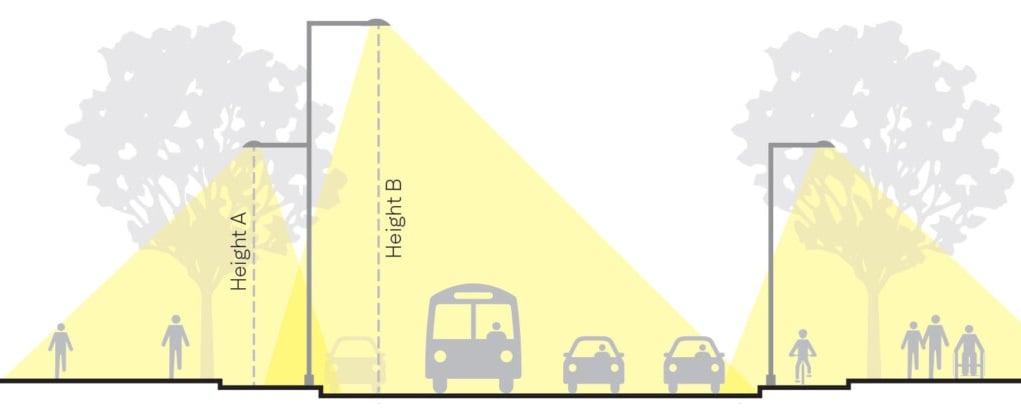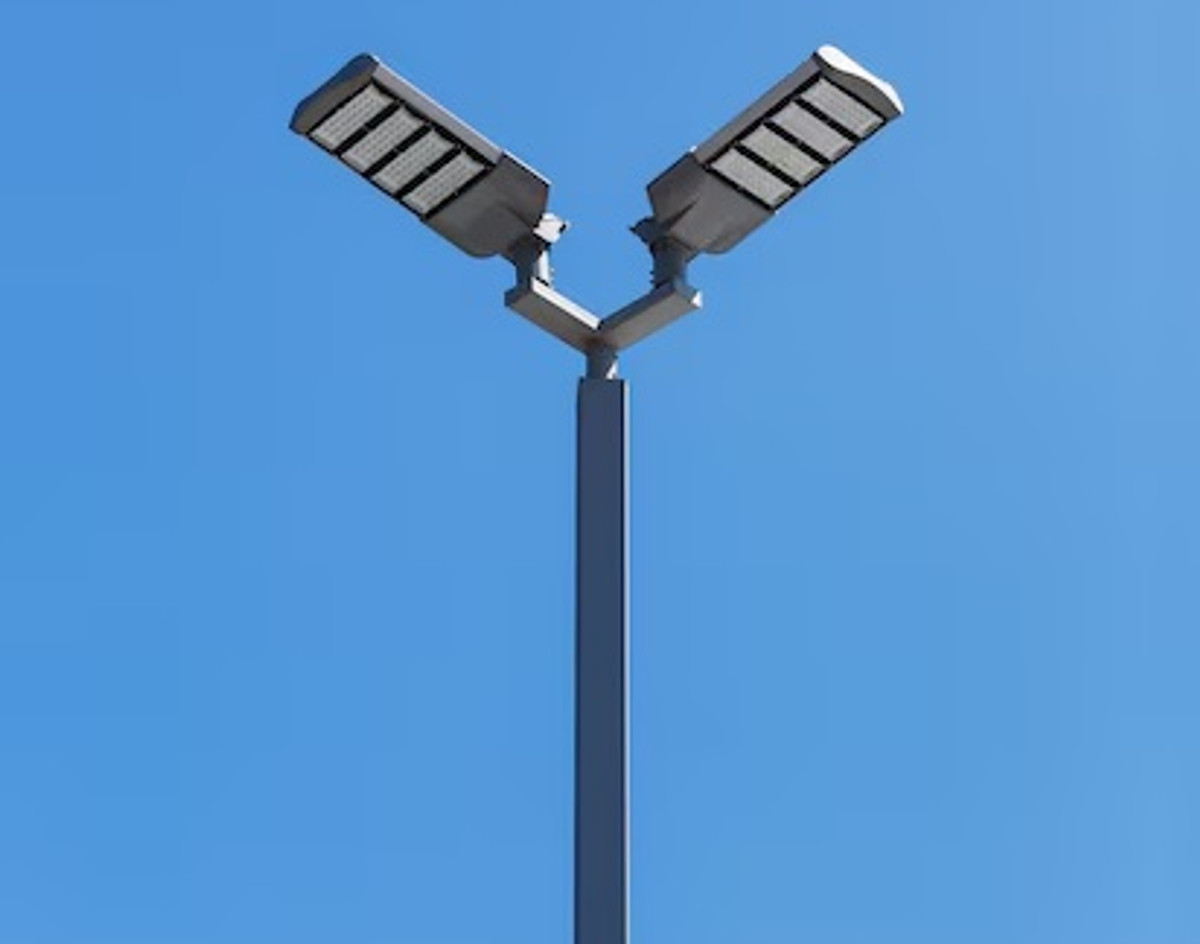Purchasing light poles is a lot more complicated than it would seem. There are many things to consider when determining the most suitable light poles for your project. Among them are:
- The type of light pole that you’ll need.
- The environmental and geographical considerations.
- The type of material that the light pole is constructed of.
- The installation method of the light pole.
- The amount of light needed from the associated light fixtures you’ll use.
Another important consideration is the height of the light poles. Poles that are too short or too tall will have a measurable effect on lighting quality and public safety. This article will help you to determine the proper height for the poles needed for your project.
Understanding Light Pole Heights
Common light pole heights are as follows:
- 10 foot light pole
- 12 foot light pole
- 15 foot light pole
- 20 foot light pole
- 25 foot light pole
- 30 foot light pole
- 40 foot light pole
In general, the height of the pole impacts how far the light is dispersed. For smaller areas, like a small parking lot, light poles could be at the height of 20 feet. However, for bigger spaces that need more light coverage, like a highway, light poles may have to be 30-50 feet in height to adequately cover all areas.
Light source output is another factor to consider in pole height. For larger areas, fixtures emit higher amounts of light, so the pole should be taller. This will give uniform coverage of the area and cut down on glare. Conversely, you will most likely use a fixture that emits lower light for smaller areas, so the pole height will be shorter. Also, if you mount a pole with a low light-emitting fixture too high, it will not light the area effectively.

Height Standards for Different Settings
- Streets: This will depend on the width of the street. 15- to 20-foot light poles will be suitable for a narrow residential street but you’ll need taller poles for wider roadways. Wider roadways will require poles that are 25 to 50 feet tall with longer arms (4 to 8 feet in length) to get the light source closer to the center lanes.
- Parks: Lighting for parks is used to enhance aesthetics and safety. Shorter poles can be used to illuminate pathways whereas taller poles will be needed if there are large spaces like sports fields that are illuminated.
- Commercial Areas: Lighting for security and visibility requirements are the objective here. Because there can be a wide variety of area types, pole heights will depend on the function of the area. Shorter poles will be used to illuminate walkways and courtyards, while taller poles will be used to illuminate parking lots, loading docks, and general-purpose areas.

Regulatory Guidelines and Compliance
There are various local standards affecting pole height. It’s best to consult the municipality in which your light poles are being installed so that your installation will be in compliance.
- Some municipalities will have specified minimum pole height regulations that aim to minimize glare. When poles are too low, the light source can be directly visible to drivers or pedestrians, causing discomfort and reduced visibility. Adequate height ensures that the light is directed downward and not into people’s eyes.
- In urban environments, poles are required to allow space for utility lines (such as power, telephone, or fiber optic cables) to be routed overhead without obstructing pedestrian or vehicular traffic.
Technical Considerations
Structural Integrity
The structural integrity of a light pole will be different at various heights. Light poles are similar to trees. The taller the tree, the larger the diameter and the deeper the foundation. Taller poles will typically be round tapered in shape where the base (footprint) is bigger at the base with a deeper foundation. Shorter light poles can be thinner with a lot less foundation depth.
Light Pole Material
The material also plays a big role in selecting poles. Steel is the strongest with fiberglass coming second. Aluminum is the weakest so the shaft of aluminum light poles will have to be wider with larger wall thickness to properly carry the load.
Wind Resistance
EPA tables will gauge the wind load a light pole can handle along with its associated light fixtures, cameras, mounting hardware, and miscellaneous attachments. These tables are listed on the associated specification sheet for any given light pole. It’s important to know what geographic wind zone you are installing the light poles in so that they can handle the load safely. As a rule of thumb, round poles are more resistant to wind than square poles. Moreso, round tapered poles have better wind resistance than round straight poles.
Installation Method
One final thing to note, light poles are installed in one of two ways: anchor base or direct burial. Anchor base light poles are secured to a concrete foundation with anchor bolts. Direct burial light poles are installed directly into the ground and then backfill is used to secure them in place. In this case, part of the pole shaft is below ground, and you’ll need to know the height of the pole that will be above grade.
Choosing the Right Height for Your Project
To summarize, there are three important factors to consider when selecting the proper light pole height for your project:
- Application – Shorter poles are ideal for spaces that don’t require as much light spread. Taller poles are ideal for illuminating larger spaces.
- Environment – Urban, commercial, residential, and rural locations will have different requirements.
- State and local regulations – Different regions will have their own unique set of regulations. Consult the local authority where the light poles are being installed before planning your installation.
LightMart's Offerings
It’s important to adhere to light pole height standards. Each lighting project will have its own objectives and understanding light pole height requirements is critical.
LightMart offers a wide range of light pole sizes, and our expert guidance can help you meet diverse project needs. We also offer custom sizes. Contact us today!
David DeWald is the E-Commerce Marketing Specialist at LightMart. He has been working in the industrial and commercial lighting industry since 2013 and is based in the greater Chicago area. David specializes in digital product management, web content writing, and product marketing. He regularly publishes lighting industry-related articles on the LightMart blog. You can visit his LinkedIn profile here.
